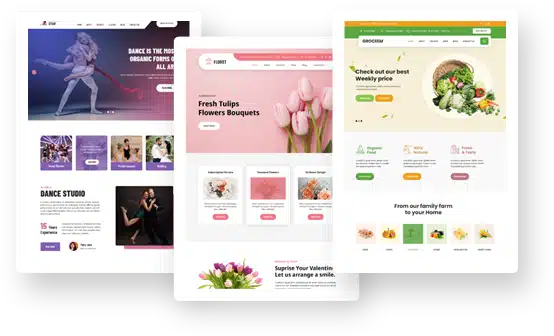A Guide to Organic Social Media Marketing
With paid social media ads now at your disposal, you might wonder if it’s worth investing in organic social media marketing. Platforms update their algorithms constantly, which means it’s harder to promote your business and reach your target audience naturally.
Despite the challenges, organic social media marketing is still relevant in 2024. It can help you connect with prospects, build customer relationships, and boost sales.
In this article, we’ll walk you through what organic social media marketing is and how to create a foolproof strategy that increases your reach. Let’s get started!
What Is an Organic Social Media Strategy?
An organic social media strategy aims to increase organic social media reach. Organic reach refers to the number of people who see your social media content through unpaid or natural means. These people can discover your content through their network or by browsing their social media feeds.
Several factors go into increased organic social media reach, such as social media algorithms, your engagement metrics and more.
But why should you invest in an organic social media strategy when you can use paid ads? After all, for an organic social media strategy to be effective, you need time to build a strong following.
Simple: there are still many benefits to such an approach. Organic social media marketing can help you increase credibility, brand loyalty, and industry authority. It also allows you to share your brand story and values and create a deeper connection with your followers.
That’s not to say you should shun a paid social media strategy altogether. Paid social media also has significant benefits. Especially if you master user-generated Content (UGC) for ads. UGC can be a powerful asset for your advertising campaigns, injecting authenticity and relatability into your marketing efforts. It can generate faster results since you can gain more reach simply by increasing your budget.
It’s a great tool to boost lead generation, too. Sponsored posts like the one below, can help you reach your specific target market. They can also help you retarget social media users who have engaged with your posts.

So, instead of choosing one approach over the other, combine organic social media strategies with paid ads. These two strategies can bring complementary benefits; while paid advertising offers immediate visibility, organic reach can help you gain long-term credibility.
Does all this mean you should only use social media to promote your business? Of course not.
You should also take advantage of other channels outside of your social platforms. Create a website that showcases your offerings. Just ensure a user-friendly site design and leverage the fastest web hosting services for the best SEO results. Take advantage of email marketing as well. You can send newsletters to nurture your relationships with customers.
With this holistic approach to promotion, you ensure the best visibility for your business.
5 Organic Social Media Marketing Tips to Follow
Now that you know what benefits you can reap from organic social media marketing, let’s look at how you can create a perfect strategy for your business. Here are five actionable tips you should implement as part of your organic social media marketing plan:
-
Determine Social Media Channel to Focus on
The first step to creating an organic social media strategy is choosing a platform to focus on. Will it be Facebook, Instagram, LinkedIn, or Twitter (X)? Choosing a primary channel where you have a higher likelihood of success can help you maximize your efforts. Then, you can just repost the content on the other platforms to further expand your reach and target other audiences.
To determine your primary social media platform, check which one is frequented by your target audience. There are several ways for you to do this. You can think about WhatsApp marketing for it’s various benefits.
You can determine your target audience’s demographics, for instance, then choose the platform that caters to those specific demographics. For example, if you want to reach U.S. adults aged 18 to 29, use Instagram. More than 70% of this demographic prefers this platform.
You can also ask your target audience’s preferred social media platform directly. Why not send them email surveys, for example?
It also helps if you analyze your competitors’ organic social media presence and activity. Chances are, their target audience is your target audience as well. So, if your competitor uses Facebook, you might want to use that as your primary platform as well.
-
Plan Content
Once you know your primary social media platform, you can now start thinking about content creation. Your goal is, of course, to make your organic social media content engaging. That’s why you need to create an audience persona, or a fictional representation of your target audience. This should show you your target audience’s demographics, pain points, and other relevant data.

If you create content that aligns with their preferences and helps them resolve their pain points, they’re more likely to engage with it. Be prepared to create a lot of content. Consistency in posting is key in organic social media marketing. You want people to know you consistently create social content that engages and provides value. That way, they’ll always go back to you.If you don’t have time to create that many pieces of content, don’t worry. Among the many use cases of generative AI is content creation. With a good generative AI guide that tells you how to maximize use of the tool to create quality content, you can easily scale your production.
Once you have all your content, you’ll want to post at a time your target audience is active on the platform to increase the chances of social media engagement. If you’re just starting on social media, check out research on the best posting times and frequency for different social networks: Once you have the data based on your own social media experience, just make adjustments to your posting schedule and frequency.
You can use a social media scheduling tool, such as a social media content planner, to plan your content schedule. Google Sheets can help you here. But if you don’t have the time to create a calendar from scratch, there are templates online to help you get started. Check out this one from Status Brew:

If you prefer an automated process, use social media management software. Many come with a planner feature that allows you to schedule posts by custom time or using category queuing systems. -
Join Social Groups Related to Your Industry
Many social media platforms allow the creation of groups and communities where members can create posts, ask questions, and reply to other users’ posts.
You can contribute by sharing ideas and mentioning your brand as a potential solution. Refrain from hard-selling as it may come across as spam. Instead, establish your brand’s credibility by positioning yourself as an authority in the field. Here’s an example of a post that establishes a brand’s authority. This post can be found in a LinkedIn graphic design group.

But why is positioning yourself as an authority in these groups important? When people see you as an authority, they trust you and are, therefore, likely to follow your brand. The result? You can increase your organic reach.Social media groups and communities are great places to look for these followers. After all, they already consist of people interested in your niche.
-
Leverage Targeting
Targeting means identifying specific markets who are more likely to consume your content. The goal of targeting is to increase the chances of engagement with your posts.
Social media networks offer many targeting options that vary from platform to platform. However, the usual criteria include basic demographic characteristics like age, gender, or location.
On Facebook, for example, you can target people through the preferred audience selection option. Just do the following:
- Go to your Facebook settings.
- Click on General.
- Look for Audience Optimization for Posts. Enable “allow preferred audience selection and the ability to restrict your audience for your posts.”

- Choose among the basic targeting options like location, age, gender, and interests based on your audience persona
It’s best to start small—target a larger pool of users and slowly add more metrics to specify your target audience. Also, choose content that already performs well so targeting can be most effective.
-
Monitor Performance
Every organic social media strategy should be monitored and assessed regularly to ensure your efforts pay off. When you monitor your performance, you also generate data that can help you improve your organic social strategies.
Start by evaluating social media metrics such as number of followers, likes, and shares. Compare these engagement metrics with past performance and determine whether there’s room for improvement.
Most social media platforms provide analytics tools to see how your profile is performing. This is how analytics look on Instagram.

On Instagram Insights, you can see how many new followers you gained and how many accounts you’ve reached. You can also see the increase in content engagement.Consider which activities brought you the most new followers. Do you gain more followers when you buy Instagram likes? Or is it your social media contest, poll, or infographic that helps you increase your following? Whatever it is, you’ll want to double-down on the strategy or strategies.
Also, define the topics people took the most interest in. Ask yourself what is unique about the pieces of content that performed the best, too. Is it the content format, the angle, or appealing visual elements? Take note so you can improve the organic social media content you post the next time around.
Conclusion
Organic social media marketing is a great tool for reaching your target audience. But you need to exert effort to ensure your content marketing efforts yield excellent results.
You learned tips on how to ensure effective organic social media marketing. Determine your primary platform, plan your content, and engage with members of related social groups and communities. Also, leverage targeting and monitor your organic social media marketing performance.
Staying open-minded and flexible is key to a successful organic social strategy as well. Never stop experimenting and you’ll achieve sustained growth from your social efforts over time!
James Westfield Author
James Westfield is the Marketing Manager for Writer, an AI writing platform designed for teams. He has over ten years of experience in the industry. When James isn’t in the office, you can find him on the golf course.






